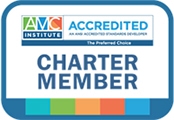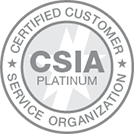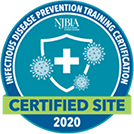I recently read an article entitled, “5 Ways to Stop Multitasking and Learn to Love Focus", written by Rebecca Hawk. It offers a fresh perspective on productivity and efficiency by focusing on one task at a time, instead of multitasking.
Working in association management means working on multiple tasks for a large part of every day. When the tasks begin to pile up and you feel overwhelmed, the urge to try to attack all of them at once can be strong. However, research has shown that multitasking is ineffective. Here are some tips that can help you manage your work more efficiently and garner the benefits of true focus.

Be clear about your priorities.
This is an essential first step. Establish priorities for your work, then engage your supervisor to ensure your priorities are in alignment with those of the association. This process can offer you freedom from the feeling that every task is urgent.
Set boundaries.
Multitasking can provide the illusion that you are available to adapt to small interruptions throughout the day. Essentially, multitasking allows you to say yes, probably more than you should. Setting boundaries on your time and availability frees you up to devote real, focused time to last minute tasks that come up.
Embrace task-switching.
While research shows that multitasking isn’t effective, task-switching is effective. Task-switching involves setting designated times for given activities, focusing on one at a time, and then switching over to another task after the allotted time is up. Multitasking may seem productive because you're constantly busy but it creates stress. Task-switching allows you to cross items off your to-do list in smaller increments, creating a feeling of accomplishment and encouraging productivity.

Give "time-wasting" tasks their own space.
Many people complain they spend hours on email or social media posts each day. Instead of letting these tasks rule your day and take time away from your priorities, try giving them a set time. For instance, set aside time to check email two or three times a day, instead of reading every message as it comes in.
Have a place to write down your thoughts or to-dos.
Create a designated document or notepad where you can write down thoughts as they come up so you can keep track of them, and determine which you need to address.
Give yourself more time to complete tasks.
It’s not unusual to underestimate the time needed to complete work, and it can lead to unproductive multitasking. By building extra time into your work schedule, you can allow room for all the steps required to complete a task instead of doing them a little at a time. For instance, you should block time after a conference call to write your notes or minutes from a meeting, so schedule some extra time to allow yourself to complete these tasks.
As you move forward with shifting to focused tasks instead of multitasking, be sure to communicate this shift with your supervisor and staff. Make it clear that you are still available and ready to help with crises. By creating boundaries and effective timetables for your work, you'll find that you become more engaged and less stressed leading to an improved work/life balance.




